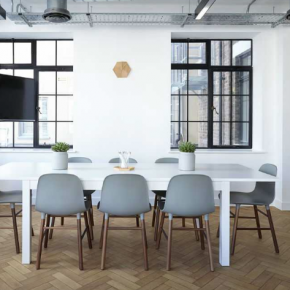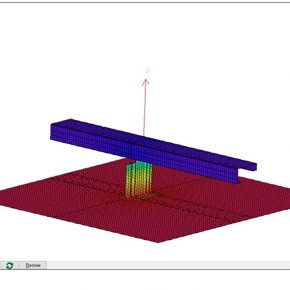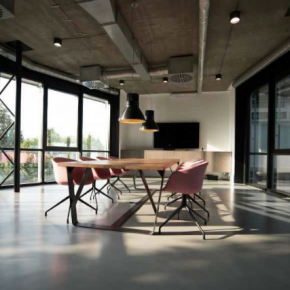
GUEST ARTICLE: How to Check a Commercial Building for Damp
If you’re looking for a new brick and mortar location for your expanding business, you’ll no doubt already have a long list of requirements that it must meet. Its location and size, on-site facilities and current license are all probably quite high on your list, but how carefully are you considering the building’s structural condition?
Maybe the property looks completely fine. There’s a slightly musty smell, but it can be attributed to the building being vacant for a while. Perhaps you do notice a few spots of mildew near the windows, but nothing that a fresh coat of paint won’t cover. You certainly don’t suspect that there’s an underlying issue with damp, but that’s the problem.
Damp, along with other serious structural defects, can easily go undetected, particularly by those who aren’t entirely sure of what they’re looking for. Left unchecked, it can also cause thousands of pounds worth of damage and cause a building to be extremely dangerous for those inside.
Hidden issues like damp are one of the reasons why it’s so important to hire a commercial surveyor (such as Tim Greenwood) before committing to the purchase of any property. Their job is to undertake a professional investigation of the building to look for damage or hazards that might affect the price you wish to pay for the property, or your desire to proceed with the sale at all.
If you’re still viewing potential properties for your business venture, here are the most obvious indicators of damp to look out for.
==================
Mould growth
Check areas of the building that are the most exposed to cold, darkness and moisture – these are the conditions it takes for mould to thrive. A few grey speckles of common mould might be remedied by improving the ventilation in the room, but when it comes to more severe cases, you will need expert guidance to deal with it.
The most pressing concern with any type of mould is that it can cause severe illness in those exposed to it. Asthma attacks, respiratory problems, lung infections and even bone marrow disease can all be triggered by breathing in certain mould spores.
Discolouration on walls
Penetrating damp (the kind that is caused by outside water getting in) often leaves dark patches in plaster and paintwork, where the moisture is seeping into the building materials and leaving them permanently wet. These dark patches may affect floors and ceilings, as well as walls, and are usually worse after bad weather or heavy rainfall.
You might also notice “tide marks” on ground-floor walls. These may be mineral deposits left by moisture that has travelled upwards from the ground, before evaporating away in warmer weather. Although the phenomenon of ‘rising damp’ has been hotly contested by property experts for many years, a qualified surveyor should be able to confirm whether the tide marks are a symptom of a bigger issue.
General decay
Where damp has been allowed to permeate the building for an extended period of time, you can expect to find weakened building materials. Timber window frames will be soft and easy to break apart, while
internal décor (like paint, skirting boards and wallpaper) will start to come away from walls. Look out for crumbling plaster and ‘spalling’ brickwork, too.
Condensation
Condensation is caused by warm, moist air hitting a cooler surface, like a window. It’s a common occurrence in residential and commercial kitchens, bathrooms and laundry rooms where the air is particularly damp.
If you can spot beads of moisture on cold surfaces it suggests that the air in the building needs to be circulated better and ventilation needs to be improved to prevent it from becoming a major problem.
Musty odour
Sometimes, the only tell-tale sign of damp is something you can smell, rather than see. If the air in a room smells ‘stale’ or ‘musty’, the chances are that there’s damp nearby. It might seem like opening windows and doors will shift the odour, but you will need to determine its source before you can be sure that the building structure hasn’t been completely compromised by damp.
If you notice any of these signs, don’t assume that you have found the root of the issue. Damp can manifest in many ways, and the last thing you want to do is expose your workers or tenants to an unsafe environment. Seeking a professional opinion is always recommended so you can get a full picture of the extent of the damp and how much it will cost to eliminate it.
Latest news

26th July 2024
Enfield Speciality Doors completes world-class project for Atlas Copco HQ
A rundown office and warehouse building completely transformed into a modern headquarters for Atlas Copco has been fitted with more than 120 internal fire doors from Enfield Speciality Doors.
Posted in Access Control & Door Entry Systems, Articles, Building Industry News, Building Products & Structures, Building Systems, Case Studies, Doors, Interior Design & Construction, Interiors, Posts, Restoration & Refurbishment, Retrofit & Renovation, Security and Fire Protection, Sustainability & Energy Efficiency, Timber Buildings and Timber Products, Wooden products
26th July 2024
Abloy UK launches new white paper
Abloy UK, a leading provider of security and access control solutions, has launched a new white paper.
Posted in Access Control & Door Entry Systems, Architectural Ironmongery, Articles, Building Industry News, Building Products & Structures, Building Services, Doors, Facility Management & Building Services, Health & Safety, Information Technology, Innovations & New Products, Publications, Research & Materials Testing, Security and Fire Protection
26th July 2024
MCRMA Member Profile: David Roy, Director of Roofconsult
David Roy of MCRMA member company Roofconsult has more than 50 years’ experience to draw upon working in the building envelope sector and a unique perspective on how it has changed in that time.
Posted in Articles, BIM, Infrastructure & CAD Software, Building Associations & Institutes, Building Industry News, Building Products & Structures, Building Services, Building Systems, Cladding, Information Technology, Restoration & Refurbishment, Retrofit & Renovation, Roofs, Walls
26th July 2024
Strand: Enhancing Door Functionality and Safety
Craig Fox, Sales Director for Strand Hardware, outlines how door industry professionals might apply door limiting stays…
Posted in Architectural Ironmongery, Articles, Building Industry News, Building Products & Structures, Building Services, Doors, Facility Management & Building Services, Health & Safety, Restoration & Refurbishment, Retrofit & Renovation
 Sign up:
Sign up: 